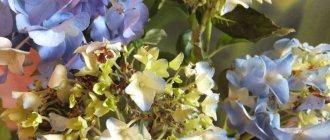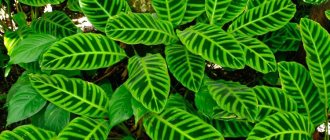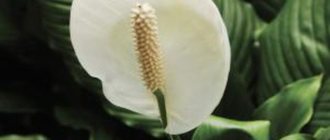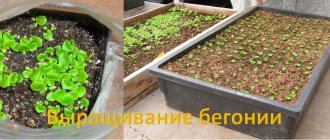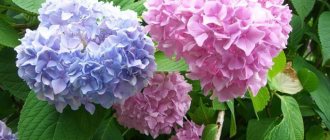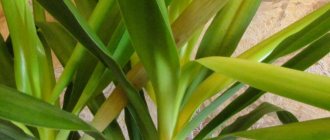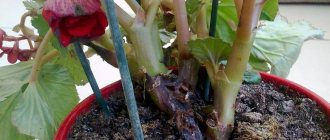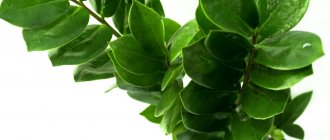Why do the leaves of garden or home hydrangea dry (wither) at the edges?
Amateur gardeners who do not have sufficient experience may wonder why garden hydrangea withers. In fact, any external changes in the condition of the flower signal a violation of the conditions of maintenance and care, by correcting which the situation can be corrected.
Healthy plant bushes will decorate any area
Insufficient soil moisture
All varieties of hydrangea, whether large-leaved or paniculate, are moisture-loving.
Due to the drying out of the soil in the root zone, the bush will begin to wither, the leaves will dry out and curl.
How to revive hydrangea in this case? Everything is very simple - restoration measures for a bush growing in open ground consist of proper watering and additional mulching of the planting site.
Excessive soil moisture
Excessive watering is also detrimental to hydrangeas. Due to stagnant moisture, the bush may shed its leaves. If the greenery begins to fall off, then it is important to understand that the drying of the leaves is just a consequence of rotting of the roots.
Attention! Only replanting and subsequent moderate watering will help save the bush.
Low air humidity
Excessively dry air is one of the main common reasons why hydrangea leaves dry out at the edges. A plant growing outdoors will benefit from regular spraying of the entire above-ground part.
A flower kept at home can also be irrigated with water from a spray bottle. Some gardeners use household humidifiers for the same purpose or place a container of water near the hydrangea tub.
Excessive lighting
Drying of leaves is often a consequence of excessive light. Hydrangea generally does not do well in open sun and requires shade. In a brightly lit area, the bush will begin to disappear. Replanting or installing an artificial canopy close to the plant can help in this situation.
It is recommended to install a pot with home hydrangea on a window facing west or east.
Attention! When cultivating home hydrangea, it is important not to allow the leaves to come into contact with the window glass, as the delicate greenery can get seriously burned.
Hypothermia
Hydrangea is a heat-loving plant; regions with cool climatic conditions and sudden changes in weather are not suitable for it. Due to sudden sharp temperature changes and gusts of wind, the hydrangea begins to hurt, the leaves turn black and dry, and the bush gradually withers.
Resuscitation measures will be limited to normalizing the air temperature to the optimal level of +20..+23 °C. If it is impossible to create such conditions in open ground, then it is recommended to transplant the flower into a sufficiently spacious tub and transfer it to home maintenance.
Heavy or compact soil
The density of the soil in the place where the hydrangea is planted is very important for its comfortable existence and development.
The plant needs loose, light, but nutritious soil. Clay soil will interfere with the normal removal of moisture from the roots and the circulation of oxygen in the root zone. Under such conditions, the root system of the flower will begin to “suffocate”, and the bush will suffer from nutrient deficiency.
Increased or decreased soil acidity
For the normal development of hydrangea bushes, maintaining a certain level of acidity in the soil is required. The optimal pH should be between 4.0 and 6.0. In soil with an alkaline reaction, the leaf blades of the plant will begin to lighten and dry out completely.
For reference! You can increase the acidity of the soil by watering with acidified water. Experienced gardeners use citric acid for this.
Lack of microelements
Nutrient deficiency also leads to drying out of hydrangea leaves. To prevent this from happening, the plant is alternately fertilized with organic matter and mineral compounds throughout the season.
- To prevent the greenery of the bush from turning yellow, starting in March it is watered with nitrogenous fertilizers.
- During the budding period, it is advisable to add potassium, phosphorus, and iron.
- When preparing for winter, it is also recommended to use potassium-phosphorus preparations.
Watering with hard water
Hydrangea is very sensitive to the composition of the water that is spilled on it. This is especially true for the content of lime impurities. That is why it is necessary to settle the water in open containers exposed to open sunlight.
Watering should be carried out only with soft and warm water
Improper planting or replanting of shrubs
Quite often, hydrangea leaves begin to dry out due to improper planting techniques. Problems in this case can be divided into damage to the root system of the seedling and planting in the wrong place.
Root damage
The delicate roots of hydrangea require very careful handling when transferring the seedling into open ground. That is why it is important to check the condition of the roots when purchasing a seedling.
It is highly undesirable to trim the roots when planting. The only exceptions are non-viable shoots that are dry or dark brown. Healthy roots should be white.
Attention! All pruning procedures are performed with disinfected tools, and the cuts are sprinkled with crushed coal.
Wrong location
Errors when choosing a site for planting may include other problems with drying hydrangea leaves:
- excess or lack of light;
- lack of protection from drafts and gusts of wind;
- excessive soil density and inappropriate acidity.
Proper placement of the seedling can save you from many subsequent difficulties.
Pest Control
Garden hydrangea often becomes a “target” of various pests. It is important to recognize the onset of damage in time and take measures to improve its health, otherwise the flower will begin to fade.
Common Pests
- Downy mildew.
It can be recognized by oily spots on the surface of the leaves. Over time, they spread, turn yellow, and take on a dark shade. A yellowish coating forms on the underside of leaves and young shoots. Powdery mildew is often found when grown in greenhouse conditions, with high humidity and an air temperature of 17-20 degrees.
To get rid of the pest, you need to treat with a soap-copper mixture prepared from 150 grams of green soap, 15 grams of copper sulfate and 10 liters of water.
- Spider mite -
settles on the undersides of leaves, covering them with brown cobwebs. Then they become marbled in color, dry out and fall off. Spider mites are an insidious enemy. At high temperatures (27-30 degrees) and low humidity, it spreads in just 5-7 days.
You can fight ticks with thiophos.
- Green leaf aphids are
an equally dangerous pest. It sucks out the juice and leaves a sugary, unpleasant discharge in which fungi form. Aphids spread quickly, the leaves turn yellow and fall off. Settles on the bottom of the leaf.
Aphids can be controlled with insecticides.
- Slugs -
attack in conditions of too dense and frequent planting. They cause harm by eating foliage. You can fight them with molluscicide (granular preparation). It is scattered near the bushes on the surface of the ground.
How to revive hydrangea after winter?
If the flowers were properly prepared before the onset of cold weather (hidden under cover), there will be no problems. With the onset of spring, the flowers will come to life and will delight you with new blooms in the summer. But what if the flower is left without shelter in winter (read about how to cover hydrangea for the winter here)? It will be difficult to return to the previous appearance. But this task is quite feasible.
- To protect against fungal diseases, treatment with Bordeaux mixture or copper solution .
- The affected foliage and twigs are removed and the treatment is repeated after two weeks.
- Pay attention to the ground. Acidify it with a weak lemon solution .
- Be sure to tidy up the appearance of the plant, remove frozen, dry twigs, and feed it. This year it will not bloom, but if you take all the necessary measures and properly prepare for the next winter, in a year it will gain strength and bloom again.
Hydrangea is a charming flower that loves constant attention and care. Take care of it correctly and it will become the main decoration of your summer country garden.
For more photos on the topic of garden hydrangea diseases, see below:
Causes of blackening of leaves
When the leaves of a hydrangea begin to turn black and dry out even with proper planting and proper care, you should take a close look at the bush for the presence of diseases. Moreover, the nature of blackening plays a key role in determining the disease and methods of combating it.
Dry blackening
Anthurium flower - why leaves and flowers turn black and dry
When the edges of the leaves and their tips dry out on a hydrangea, we can say with a high degree of certainty that watering is taking place with hard water or the plant is “burning” under open sunlight.
To revive the plant, it is necessary to eliminate the cause of dry black spots.
Wet blackening
Loss of leaf elasticity and darkening indicates that the plant:
- suffered a sharp drop in temperature;
- suffers from waterlogging;
- not protected from gusts of cold wind;
- planted in soil that is too heavy and dense.
Attention! Also, the reason for wet spots on the leaves and the fact that they begin to darken may lie in the flower becoming infected with a fungal infection.
The fungus will cause the leaves to turn black and dry out.
Pests and parasites
Leaf aphid
Small parasitic insect. Finds soft parts of the plant and sucks the juice. In small quantities it does not pose a threat. Typically, the number of aphids is regulated by natural enemies - ladybugs, lacewings, and some beetles. However, in large numbers, aphids can weaken or completely destroy the plant.
A colony of aphids usually sits tightly together and is clearly visible on the plant. The first sign that your hydrangea has aphids will be drying and yellowing of the leaves.
- When the colony is small, it is enough to wash the plant with a soap solution or spray it with water from a hose.
- If the colony is large, you need to use special insecticides - Iskra, Bison, Akarina. The products are toxic, you must strictly follow the description and instructions.
On a note! Marigolds growing nearby attract ladybugs, the natural enemies of aphids. Thus, planting these flowers serves as a natural prevention of aphids.
A proven home remedy is a decoction of tobacco dust. The advantage of a home remedy will be its lower toxicity compared to insecticides.
Spider mite
A very tiny tick, almost invisible. It feeds on plant sap. Actively reproduces in the dry hot season.
You can recognize a mite by the appearance of a thin web on the leaves. When a plant is severely affected, colonies are visible to the naked eye as a cluster of tiny reddish spots on the leaves and stems. A leaf affected by this parasite may curl and curl.
- While the damage is small, you can get by by applying a soap solution or any mineral oil to the leaves.
- In case of dangerous infestation, special anti-tick agents are used - Akarin, Molniya.
The therapeutic effect of tobacco dust is not as great as against aphids.
Root nematode
Microscopic primitive worm. It attacks plant roots and penetrates trunks. Once multiplied, it can literally poison the plant with caustic secretions.
The nematode can be recognized by the red galls on the roots and at the base of the stems. These blistering-like swellings begin to rot and die. The affected plant slows down its growth and may die if the parasites are allowed to multiply.
Important! If a plant is affected by a nematode, there is no reliable treatment. So all hope lies in prevention.
- The worm's natural enemies are other predatory nematodes and special fungi that parasitize worms. To increase their quantity, sugar is added to the soil (in small quantities).
- The chemical preparations Actofit and Fitoverm do not kill the natural microflora of the soil, but they fight root-knot nematodes. They are added to the soil a couple of days before planting.
garden slug
The slug eats plant leaves, preferring young leaves and tips of shoots. Feels especially good in dense thickets, loves shade and high humidity. Slugs are easy to detect by characteristic damage to leaves; they usually hide in the axils of leaves or under stones in shaded places.
Slugs pose a serious danger to very young plants in greenhouses in the spring.
Slugs are usually collected by hand and the clutches of their eggs in the axils of plants are destroyed. Special chemicals such as Molluscicide are toxic.
Preventive treatment with preparations containing copper and fungicides will help resist fungal infections. Hydrangea seedlings must be healthy and not arouse suspicion; this will avoid viral diseases, for which there is simply no cure.
The most dangerous pest of hydrangea is the root-knot nematode, against which only prevention helps. Suitable soil, proper care and attention will protect hydrangeas and keep them healthy.
Drying branches
The main reasons why begonia leaves dry out
Tree hydrangea shoots may also experience drying out and other painful changes. Most often, the cause is various types of rot.
White rot
This fungal infection causes the plant to slowly die. It begins with infection of the root system due to waterlogging of the soil and the subsequent nutritional deficiency of the hydrangea.
The disease can be identified by a whitish coating in the form of flakes, and the branches may turn black. Proven fungicidal preparations (Fitosporin, Copper Oxide), used in accordance with the instructions, help cure the bush.
Gray rot
Parts of the bush exposed to this disease soften, become watery, and become covered with a gray coating. Subsequently, such areas die off and through holes form in their place.
The affected parts of the hydrangea are cleaned by hand and then treated with suitable fungicides. For garden specimens, it is recommended to use Rovral Flo 255 SC once every 3 weeks. Pure Flower or Fundazol are more suitable for indoor flowers.
How to save hydrangea if it has dried out
Having discovered that the leaves of a hydrangea are turning black and drying out, you can try to save it if you act immediately. There is no point in postponing resuscitation and treatment.
A sick hydrangea can be saved
In the garden
In an outdoor hydrangea that has begun to dry out, all non-viable shoots should be removed. If rot appears, the cut must be made along a healthy area, 1 cm below the affected part of the stem. In this case, the instrument must be disinfected after each manipulation, and the wounds are sprinkled with crushed coal.
After pruning, the bush is sprayed with a suitable preparation.

